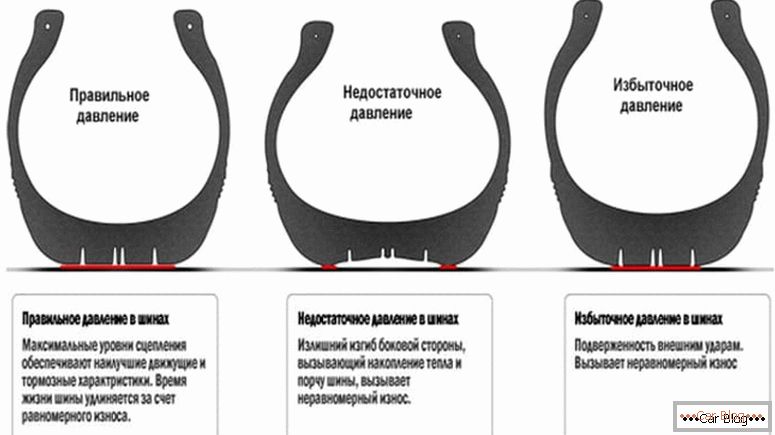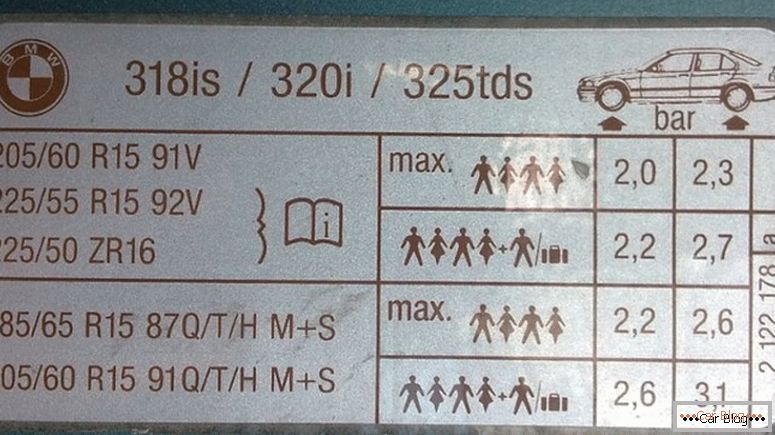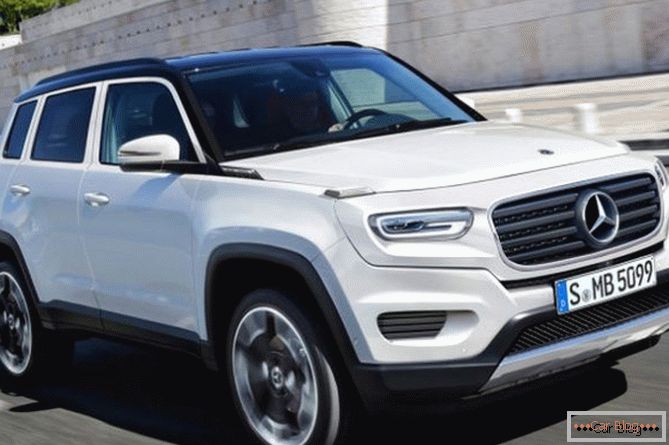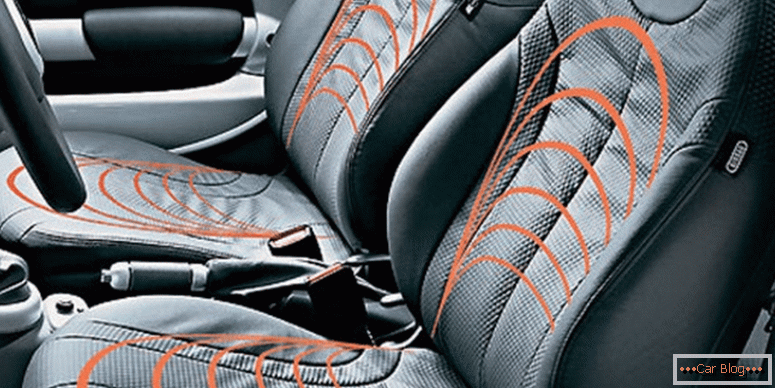Driving responsibility implies not only concentration of attention while driving, but also control over the technical condition of your vehicle. The behavior of the car on the road depends largely on the level of pumping wheels. What pressure in the tires of a car is considered the norm, every owner should know. The pressure in the wheels is influenced by many factors: the axis of the installation, the degree of congestion of the car, the climatic features and the condition of the roadway. In addition, each brand has its own indicators recommended by the manufacturer. And on the tires also indicated the permissible pressure range. Drivers often get confused if these two numbers do not match.
Content
- 1 Calculations taking into account
- 2 Myths and their consequences
- 3 Variable values during cold and heat
- 4 Conclusion
Calculations taking into account

Inflate tires should be following the recommendations of the car manufacturer, but do not exceed the maximum allowable pressure indicated on the tires
The modern market for automobile tires amazes with a wealth of choice. As already mentioned, each tire model has its own recommendations for pumping. How to choose the best option? The main thing is to take into account everything that will affect the level of pressure in the tires during their operation:
- Make and model of the vehicle.
- Wheel diameter
- Seasonality of rubber (winter or summer).
- The nature of the road surface, which will have to go more often.
- Driving style.
If the car is supposed to install tires of a different type, then they should be pumped up to the maximum permissible value. If their load-carrying capacity has a lower value, then the pumping level should be increased, adhering to calculations of 0.1 atmosphere per unit load.
As a rule, automakers recommend pumping the wheels of their cars in the range of 1.9–2.2 atm. When inflating tires on a “passenger car” you should not forget that the pressure of tires located on the same axis should be the same. As a rule, the front tires inflate less than the rear by 0.2 atmospheres, but this figure should not be greater than the maximum permissible value indicated on the tire surface.
See also: How to paint your own wheelsChoosing the right pressure, you must first take into account the recommendations of the manufacturer of the car, and not tires. Because automobile tires are the component part that needs to be selected under the operational standards of the vehicle. However, new models of manufactured tires (for example, low-profile) abandon these standards.
Myths and their consequences

The consequences of insufficient and excessive pressure in the tires
Surely experienced drivers noticed that over-inflated tires facilitate the process of driving - the car is reliable in turns and it is better to obey the steering wheel. That is why tire pressure in racing cars far exceeds the norm. There is a certain danger in this, but the professionalism of the riders smoothes the risk.
Among car owners there is a perception that increased tire pressure saves fuel. There is some truth in this: the consumption of gasoline is indeed falling, but not so significantly. But the rubber wear faster - the central part of the tire tread is erased before the eyes. Pumping tires for such a purpose is a highly irrational decision. Do not allow and low tire pressure (below 1.9). Its consequences can also be quite unpleasant:
- uneven wear of the tire surface, resulting in a change in the angle of inclination of the wheel;
- overheating of the tire and its possible explosion;
- the increase in the area of contact of rubber with the road, as a consequence - increased fuel consumption;
- bending of the side of the tire and its rapid wear.
Variable values in cold and heat
In the process of driving a car any, even the reference pressure in can not be constant. It will change, and this is often caused by seasonal temperature fluctuations. When the ambient temperature rises, the pressure of the tires rises. Conversely, the cooler it gets on the street, the lower this figure. For example, with a range of variations in outdoor temperature of 25 degrees Celsius, the changes will be as follows:

In winter, pressure should be checked at least twice a week.
- at +25 ° C, the pressure increases by 0.8 bar;
- at -25 ° C decreases by the same indicator value.
If the car is loaded with significant mass, these figures will diverge even more. That is why the pressure in summer tires and in winter is significantly different from each other. And the more different is the tire pressure table for a loaded car.
When inflating tires of cold rubber (when temperature indicators of tires and the environment are almost the same), you need to be guided by the norms established by the manufacturer of a particular car. If tire inflation occurs indoors in the winter, for example, in a garage, then their atmospheric pressure should be increased on average by 0.2 bar. This will compensate for temperature differences, and the tires on the street will have normal pressure.
Ошибочно поддаваться мнению, что tire pressure in winter, в гололед, лучше уменьшать. Это якобы обеспечит лучшее сцепление со скользким дорожным полотном. Это миф! На управляемость машиной зимой оказывает влияние качество резины и рисунок протектора.
Often the pressure drop in the wheel is a result of loss of elasticity or depends on the composition of the air mixture. It is necessary to inflate tires for comparison with ordinary air, but with nitrogen resistant to temperature changes, as soon as a longer period of pressure retention becomes noticeable.

Often, manufacturers stick on the body of the tire pressure table for a particular car
Conclusion
Roads in the conditions of the city - this is not a racing highway, so to experiment with the capabilities of the vehicle is not worth it. The tire pressure standards specified by the manufacturers were not taken from the ceiling - the calculations are carried out by professionals, taking into account the experience of the average driver and the average speed of the car. But to check tire pressure is a good habit. This should be done every month in the summer and at least a couple of times a week in the winter. Do not forget about the reserve, because it is not known when it can be useful. Pressure testing should be carried out using a special device - a pressure gauge, but in no case using a banal tapping with the foot on the wheel.



